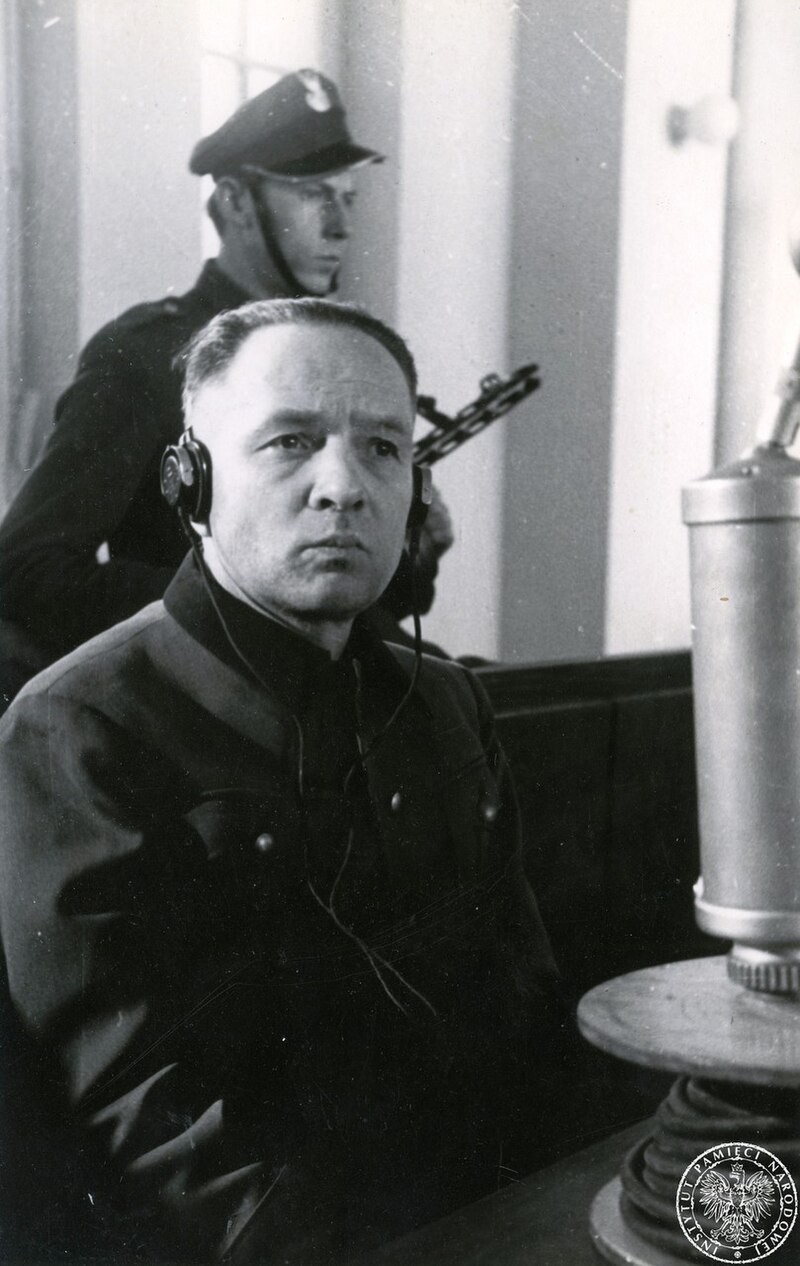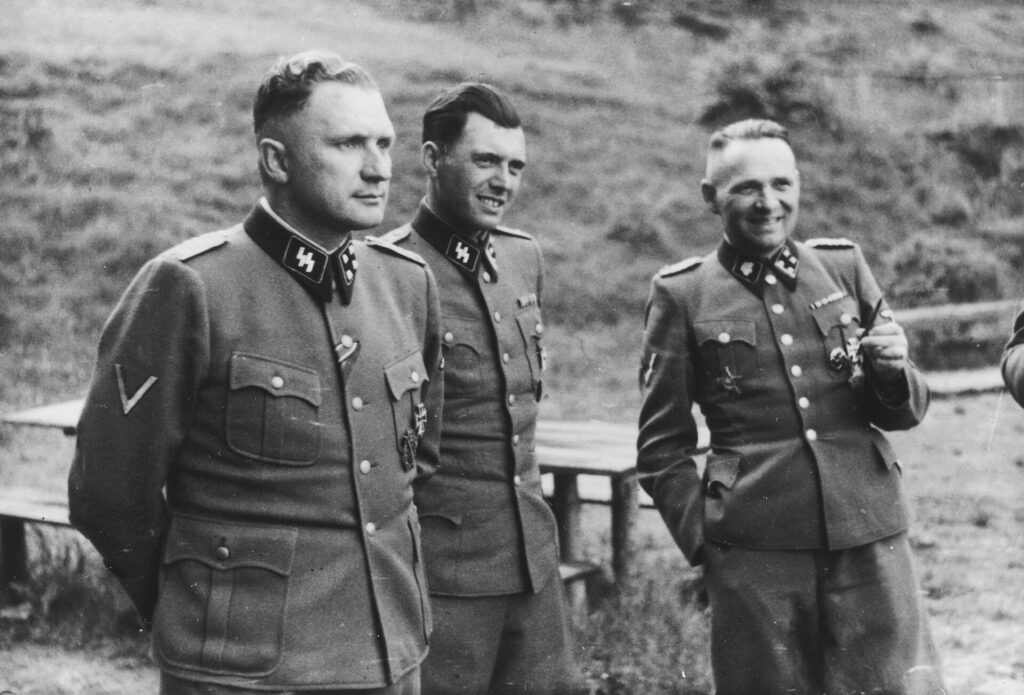The SS in Auschwitz were essential to the daily functioning of the largest Nazi concentration and extermination camp. As part of the Nazi state apparatus, the SS was responsible for establishing, running and expanding the camp system. Members of the SS garrison controlled every aspect of life and death inside Auschwitz – from administrative records to the organisation of transports, selections, forced labour and mass murder.
According to the Auschwitz-Birkenau State Museum, the garrison at its peak numbered over 6,000 men and women. Its structure mirrored a military organisation, yet it was entirely subordinated to the goals of the Nazi regime.
Commandants of Auschwitz
Three commandants held direct authority over Auschwitz between 1940 and 1945:

- Rudolf Höss (1940–1943, 1944) – the first and longest-serving commandant. He oversaw the expansion from a single concentration camp into a complex including Birkenau and Monowitz. Under his command, mass extermination using Zyklon B began. His postwar testimony at the Nuremberg Trials remains one of the most important sources on the functioning of the camp (Britannica).
- Arthur Liebehenschel (1943–1944) – introduced administrative changes and made some minor adjustments to daily camp life, but the system of forced labour and extermination continued.
- Richard Baer (1944–1945) – the last commandant. During his rule, deportations linked to the Hungarian action of 1944 brought hundreds of thousands of Jews to Auschwitz-Birkenau.
To understand how the camp complex expanded under their leadership, see Auschwitz II-Birkenau and the Commandants section at Auschwitz.org.
Recruitment and Daily Life of the SS
Most SS personnel in Auschwitz came from Germany and Austria, often very young men with limited education. After basic training in SS camps, they were transferred to Auschwitz and quickly absorbed into the brutal system of terror.
Living conditions for SS men were comfortable compared to the prisoners: they had access to proper food, medical care and free time. Some even lived with their families in housing near the camp. This stark contrast highlighted the complete dehumanisation of those imprisoned behind the barbed wire.
SS Guards and Staff in Auschwitz
The daily terror in the camp was enforced by SS guards in Auschwitz, many of them from the Totenkopfverbände (“Death’s Head Units”). They patrolled the fences, oversaw roll calls, escorted prisoners to forced labour and enforced brutal discipline.
At the height of operations, the Auschwitz SS garrison numbered over 6,000 personnel stationed across Auschwitz I, Birkenau and Monowitz (Auschwitz Monowitz).
Around 200 women also served as guards, known as Aufseherinnen. They were stationed mainly in Birkenau and in women’s subcamps. Some, such as Maria Mandel, became infamous for their brutality. More context about the women’s camp is available in Auschwitz-Birkenau History.

SS Doctors in Auschwitz and Medical Experiments
One of the most shocking aspects of the SS in Auschwitz was the involvement of doctors. Physicians conducted selections on the ramp at Birkenau, deciding who would be sent to forced labour and who to the gas chambers.
Several SS doctors became notorious for inhumane experiments: Josef Mengele, who experimented on twins and people with disabilities; Carl Clauberg, who carried out sterilisation experiments on women; and Horst Schumann, who tested radiation on prisoners. These experiments, later documented in detail by the US Holocaust Memorial Museum, left thousands dead or permanently disabled (USHMM).
Read more about the victims in Victims and Survivors of Auschwitz.
Women in the SS
While fewer in number, female SS guards exercised direct power over women prisoners. They became notorious for acts of cruelty, especially in Birkenau and the women’s subcamps. One of the most infamous, Maria Mandel, was tried after the war and sentenced for crimes against humanity.
Postwar Accountability
After the liberation of Auschwitz in January 1945, many members of the SS in Auschwitz tried to escape justice. However, several were put on trial:
- Rudolf Höss was captured, testified at Nuremberg, tried in Poland, and executed in 1947 near the former camp.
- Other SS personnel faced prosecution during the Nuremberg Trials and later the Frankfurt Auschwitz Trials (1963–1965), which became a landmark in bringing Nazi perpetrators to justice.
More about the end of the camp is covered in Liberation of Auschwitz.
Conclusion
The history of Auschwitz is not only a story of the victims but also of those who carried out the crimes. Learning about the SS in Auschwitz – commandants, guards and doctors – helps us understand how the camp functioned and why it is vital to preserve this part of history
